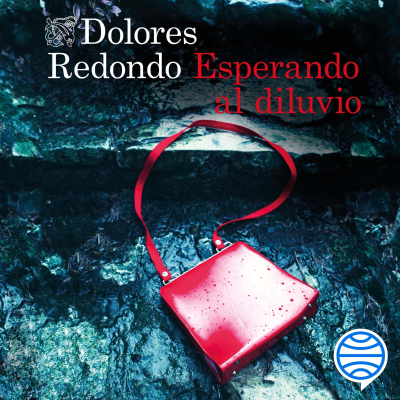
Leticia Luna
inglés
Cultura y ocio
Empieza 7 días de prueba
$99 / mes después de la prueba.Cancela cuando quieras.
- 20 hours of audiobooks / month
- Podcasts solo en Podimo
- Podcast gratuitos
Acerca de Leticia Luna
How did the English language evolve from its origins
Todos los episodios
3 episodiosSimilitaries and difference of pronouns related to both languages.
in this podcat I will mention five similarities and five differences of pronouns related to both languages . in this case, the similarities are what things that are alike have in common. As an example the pronouns and also the personal pronouns, in English and Spanish, in English we have she, he that is the gender difference, but in Spanish there is also he she, in the plural there is also gender in Spanish but not in English, Why can we say them or they and instead in English no, the pronoun they is for anyone there is similarity if there are personal pronouns in both languages and the difference is that English is not pluralized, the third person plural, and has no gender and instead in Spanish if you have. Personal pronouns can be subjects in both languages. Pronouns are used to substitute for the noun in both languages. There are singular and plural pronouns in both languages. possessive pronouns are used to show possession or ownership in both languages. Personal pronouns in English and their differences with Spanish We have already said that in Spanish you can write and speak without using personal pronouns, making yourself understood thanks, for example, to the attributes of the verb. While as you can see in these examples of personal pronouns in English it is not possible to form a correct sentence if the personal pronoun is not used in the subject. for example dije la verdad / I told de truth. We go with other differences comparing all personal pronouns in English with Spanish I Yo You Tú/Usted She Ella He Él It (para cosas, fenómenos o animales) Ello. We Nosotros You Vosotros/Ustedes They Ellos En español la equivalencia no es tan exacta. As you can see, the main differences are that: English does not have pronouns to treat someone of you (formal language is created with conditional verbs and other resources) and that the pronoun it, in Spanish, is hardly used and can be substituted for her or him, as is done with animals. Another type of pronouns in English to highlight are the demonstratives, which do not follow the logic of the personal ones, since they do not differentiate in feminine, masculine or neuter gender; something that the Castilian language does. We see the example This Éste/Ésta/Ésto That Ese/Esa/Eso These Éstos/Éstas Those Esos/Esas/Aquellos/Aquellas Como vemos, el inglés cuenta con tres veces menos pronombres demostrativos que el español. Possessive pronouns: a bit the opposite When we talk about the pronouns used to signify belonging, English is again spread out in numbers more than Spanish. However, if we talk about possessive adjectives, English repeats some possessive pronouns. We see: Possessive adjectives in English Possessive adjectives in Spanish Possessive pronouns in English Possessive pronouns in Spanish My Mi Mine Mío Your Tu Yours Tuyo/De usted His Su (de él) His Suyo (de él) Her Su (de ella) Hers Suyo (de ella) Its Su (de ello) Its Suyo (de ello) Our Nuestro Ours Nuestro Your Vuestro Yours Vuestro/De ustedes Their Su Theirs Suyo (de ellos) This is our car / este es nuestro coche . Accusative or objective pronouns: English is saved from laísmos, loísmos and leísmos Possessive pronouns in English, and also possessive adjectives, are used to indicate things that belong to us, that are yours, mine or everyone's. That is, to indicate that something is from a certain person. Pronombres posesivos en inglés Pronombres posesivos en español Adjetivos posesivos en inglés Adjetivos posesivos en español Mine .Theirs (El/la) suyo/a, (los/las) suyos/as Their Su, sus (de ellos o ellas) Solo hay una regla con ellos: Deben utilizarse después de un sustantivo antecedente (nombre , objeto, etc.) Example : Miguel is sleeping in his room but, I need back my jacket because my parents are coming and their car is fast. Miguel está durmiendo en su habitación, pero necesito mi chaqueta de vuelta porque mis padres están llegando y su carro es rápido. In this interview I have a colleague, Juan Carlo
discourse analysis
Hello, my name is,Lucia Leticia Ortiz luna . I am going to talk a little about the analysis of the discourse as the first point we have that it is a discourse analysis What is discourse Analysis? Discourse analysis is a research method for studying written or spoken language in relation to its social context. It aims to understand how language is used in real life situations. When you do discourse analysis, you might focus on: The purposes and effects of different types of language Cultural rules and conventions in communication How values, beliefs and assumptions are communicated How language use relates to its social, political and historical contextConducting discourse analysis means examining how language functions and how meaning is created in different social contexts. It can be applied to any instance of written or oral language, as well as non-verbal aspects of communication such as tone and gestures. Materials that are suitable for discourse analysis include: Books, newspapers and periodicals Marketing material, such as brochures and advertisements Business and government documents Websites, forums, social media posts and comments Interviews and conversationsDiscourse Focuses Level of communication Vocabulary Words and phrases can be analyzed for ideological associations, formality, and euphemistic and metaphorical content. Grammar The way that sentences are constructed (e.g. verb tenses, active or passive construction, and the use of imperatives and questions) can reveal aspects of intended meaning. Structure The structure of a text can be analyzed for how it creates emphasis or builds a narrative. Genre Texts can be analyzed in relation to the conventions and communicative aims of their genre (e.g. political speeches or tabloid newspaper articles). Non-verbal communication Non-verbal aspects of speech, such as tone of voice, pauses, gestures, and sounds like “um”, can reveal aspects of a speaker’s intentions, attitudes, and emotions. Conversational codes The interaction between people in a conversation, such as turn-taking, interruptions and listener response, can reveal aspects of cultural conventions and social roles.
How did the English language evolve from its origins
The English language has come a long way: what began as a dialect of invading peoples, was enriched with the contribution of various cultures until it became the most important language in the world. Here is a review of this interesting story. English in our day English is a Germanic language of the Indo-European family. Today it is the second most widely spoken language in the world after Chinese. However, English is the most widely used language in the world and is on its way to becoming the universal language. Here are some of the reasons that explain this supremacy over other languages such as French, Spanish and Arabic: It is the official or co-official language in more than 45 countries. Half of all business deals are carried out in English. Two thirds of scientific studies are written in English. More than 70% of all emails are written and addressed in English. It is the language par excellence of science today: computing. Most of the international tourism, aviation and diplomacy are conducted in English. In addition, English is present in the cultural, social, political and economic life of most of the countries of the world. As an interesting fact, we can mention that more English-speaking people live in China than in the United States. Origin and History The history of the English can be described from the arrival of three Germanic tribes to the British Isles in the years 500 BC. The Angles, the Saxons and the Jutes crossed the North Sea from what we know today as Denmark and northern Germany. The Anglos received that name due to their homeland Engle or Angels. They called their own language Englisc, a word that derived from English or English. Before the arrival of the Germanic tribes, the inhabitants of Great Britain spoke a language of Celtic origin. These people were forced to move to Wales, Cornwall and Scotland, which is why the Celtic was quickly displaced. A group migrated to the coast of French Brittany, where their descendants, even today, speak the Breton language, of Celtic origin. Because English serfdom cooked for Norman nobility, the names of most domestic animals are English (ox, cow, calf, sheep, swine, deer), while the names of the meats obtained from these animals They are of French origin (beef, veal, mutton, pork, bacon, venison). Eventually, the Germanic form of plurals (house, housen; shoe, shoen), was displaced by the French form of creating plurals: adding an "s" at the end of words (house, houses; shoe, shoes). Only in some cases, the Germanic plural form has been preserved: men, oxen, feet, teeth, children. The French influence also affected the writing, so that the sound "cw" was written as "qu" (thus, "cween" became "queen") It was not until the 14th century that English became the dominant language in Britain again. In 1399, Henry IV became the first King of England, since the Norman Conquest, whose mother tongue was English. By that time, the London dialect had emerged as the standard dialect of what is now called Middle English, or Medieval English. During the last years of the medieval period and the first of the modern period (15th to 17th centuries), a continuous process of standardization of the English language was observed, in the territory that extends south of the border with Scotland. The language spoken and written in London (The London Standard) continued to evolve, spreading its use among the higher sectors of society, especially in formal contexts. The other regional varieties were displaced, under the stigma that indicated a lack of social prestige and education.
Elige tu suscripción
Premium
20 horas de audiolibros
Podcasts solo en Podimo
Podcast gratuitos
Cancela cuando quieras
Empieza 7 días de prueba
Después $99 / mes
Empieza 7 días de prueba. $99 / mes después de la prueba. Cancela cuando quieras.























